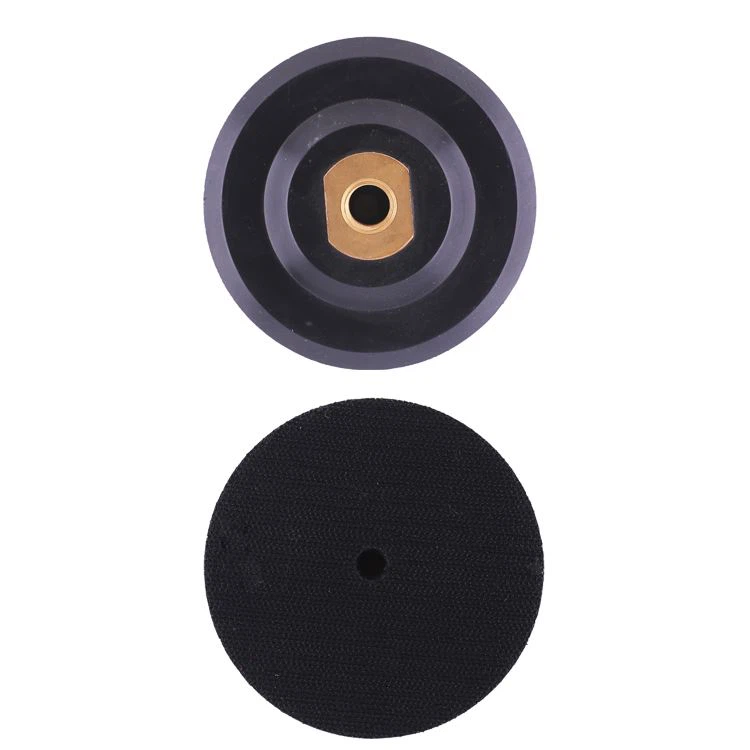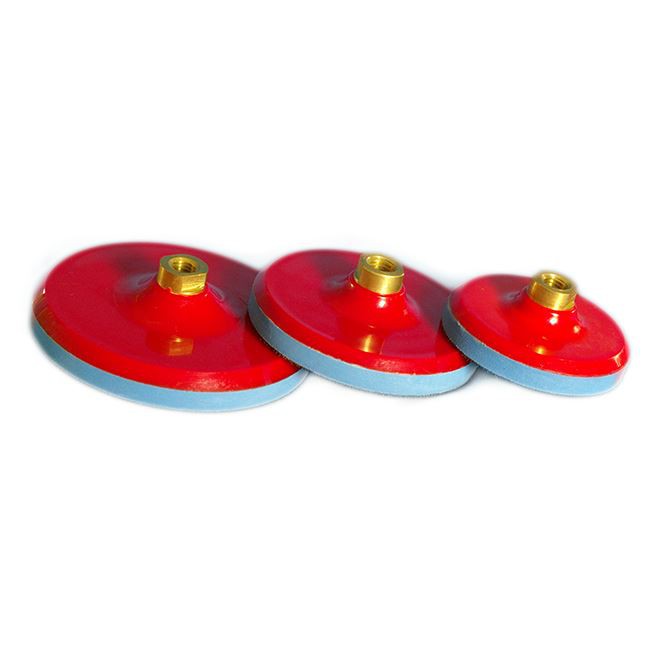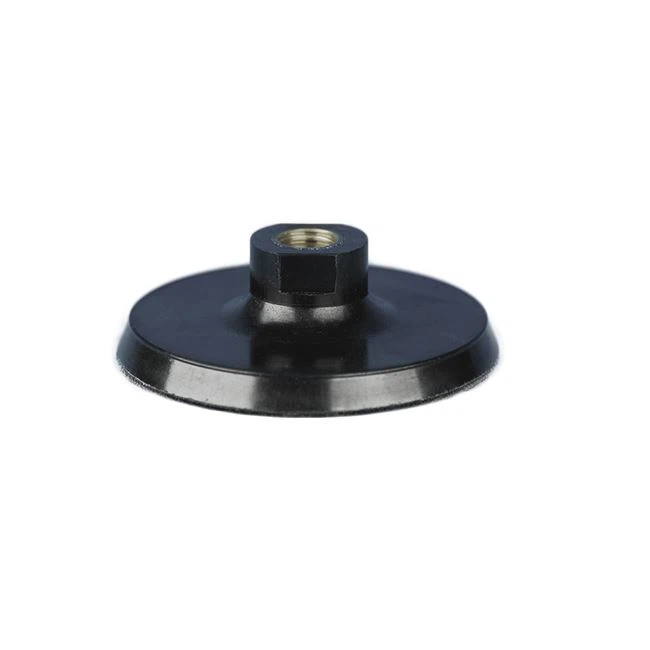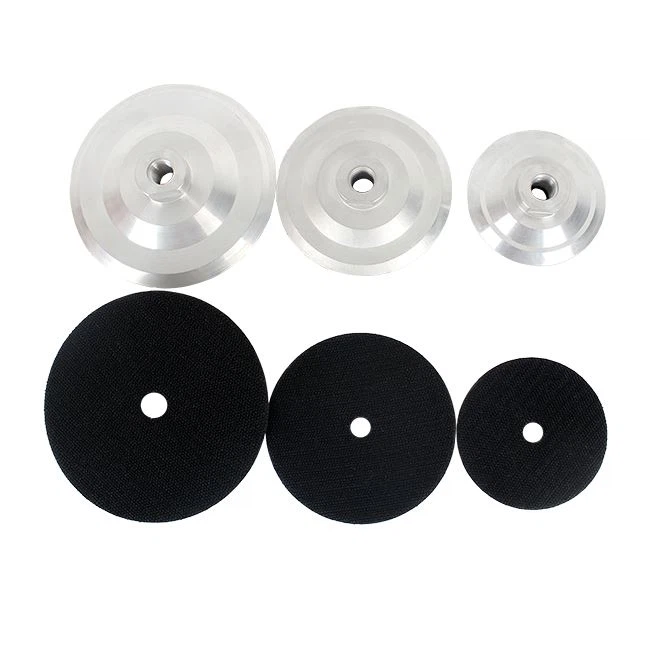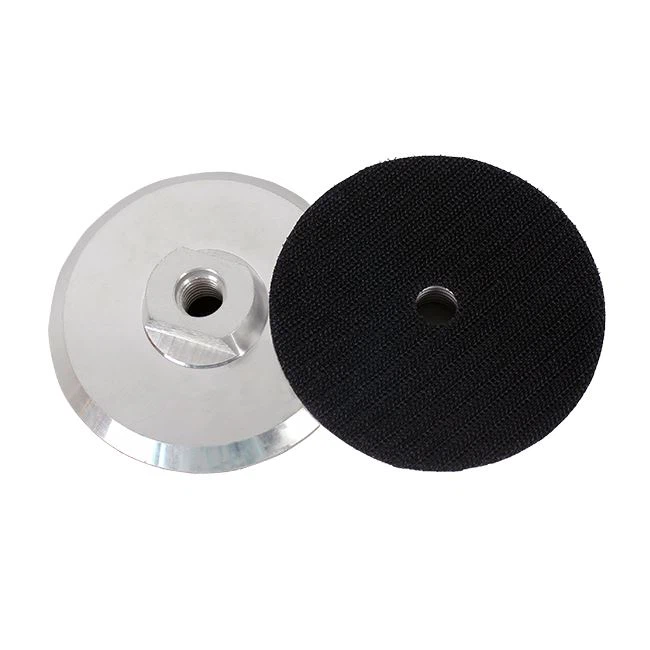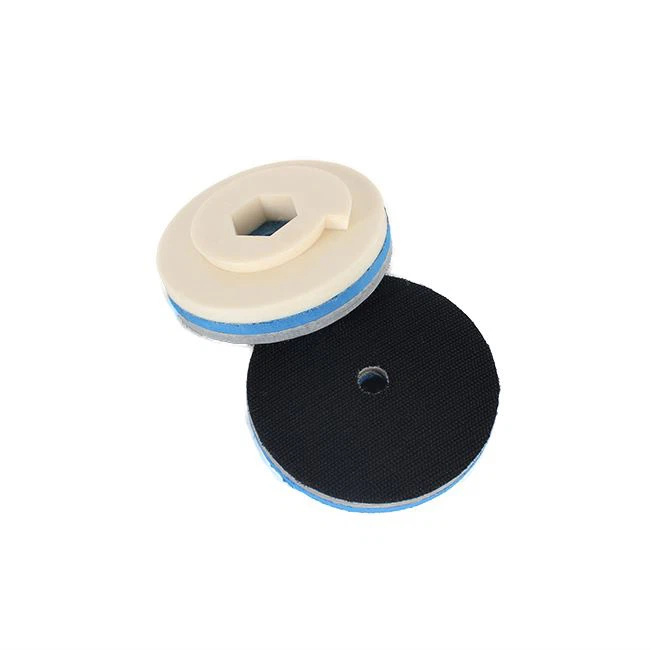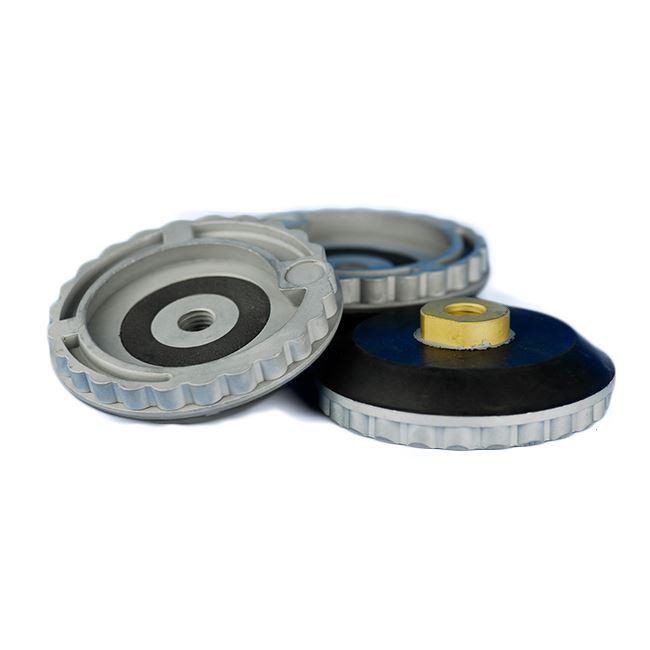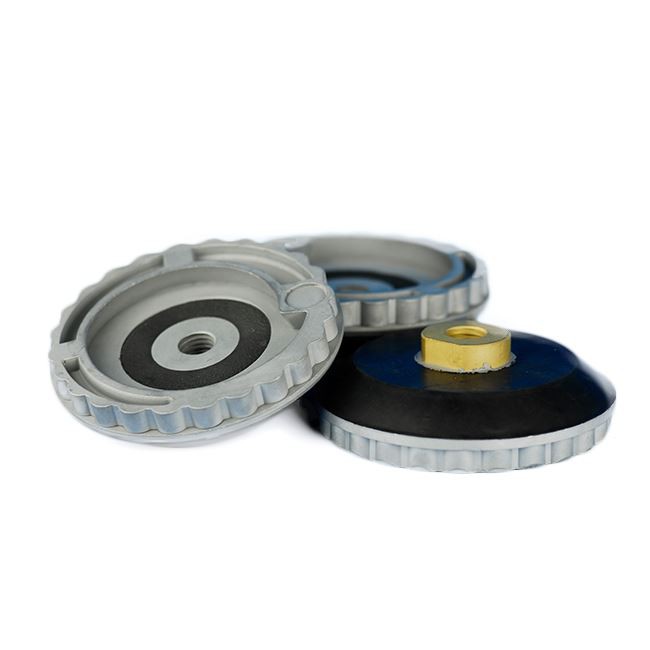Backing Pad
Why Choose Us
High-quality products
The company is committed to producing high-quality products that meet customer's standards. The company uses advanced technology and equipment to ensure consistency in the quality of its products.
Diverse range of products
The company offers a wide range of grinding tools such as diamond tools, resin tools, ceramic tools, and metal bond tools, among others, to meet the needs of its customers.
Competitive pricing
The companyprovides customers with competitive pricing on its products without compromising their quality.
Excellent customer service
The company has a team of dedicated customer service staff who are always ready to assist customers with their needs and concerns.
What is Backing Pad
A Backing Pad is an accessory that is used to support and stabilize abrasive discs or sanding pads when they are attached to power tools such as angle grinders, sanders, or drills. Backing Pads are typically made of a hard, durable material such as rubber or plastic and are designed to fit snugly onto the tool's spindle. They help to distribute pressure evenly over the surface being worked on, prevent the abrasive from slipping or shifting during use, and reduce vibration and chatter. Some Backing Pads also have a Velcro-like surface that allows for easy attachment and removal of sanding discs.
Increased support: A Backing Pad provides a rigid and stable base for sandpaper or grinding discs, which enhances their efficiency.
Consistency: By using a Backing Pad, you can ensure that the sandpaper or grinding disc maintains a constant contact with the surface that is being worked on.
Better control: Backing Pads assist in the reduction of vibrations, which gives you greater control and accuracy while working on a project.
Reduced scratching: A Backing Pad minimizes the likelihood of scratching or gouging the surface you're working on, producing more uniform results.
Extended durability
Backing Pads are usually made of durable materials, which can prolong the lifespan of sandpapers and grinding discs.
Improved safety
The Backing Pad ensures that your grinding discs or sandpapers are securely and safely attached to your tool, preventing accidents or injuries.
Versatility
Backing Pads can be used with a variety of sandpapers and grinding discs, making them suitable for a wide range of DIY and professional applications.
What Are Backing Pad Used For
Backing Pads are used to attach sanding discs or polishing pads to power tools such as angle grinders, rotary polishers, or sanders. They provide a secure, even surface for the discs or pads to attach to and help distribute pressure evenly. The Backing Pads can be made from materials such as rubber, foam, or rigid plastic and come in different sizes and shapes to fit different tools and applications. They are essential for achieving a smooth and consistent finish on various materials including wood, metal, and plastics.
Types of Backing Pad
Hook and Loop Backing Pads
These types of Backing Pads have a series of small hooks that allow sanding discs to attach. They're the most common Backing Pad type and are usually found on random orbital sanders.
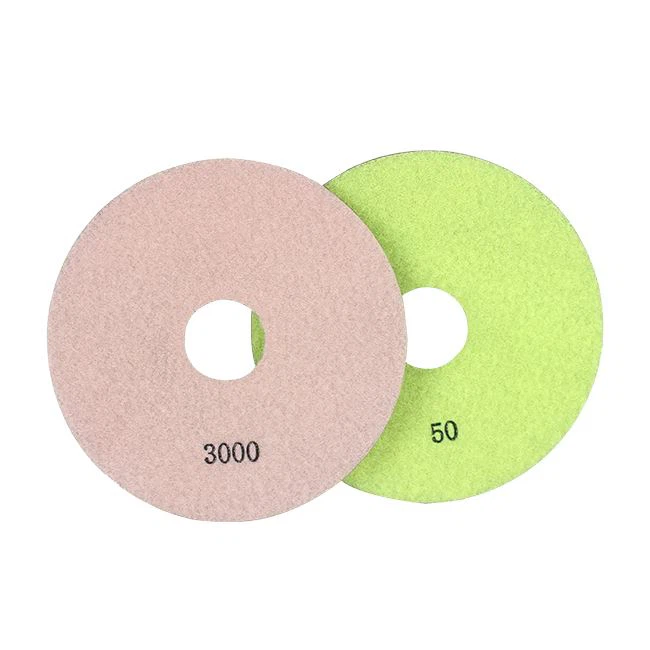
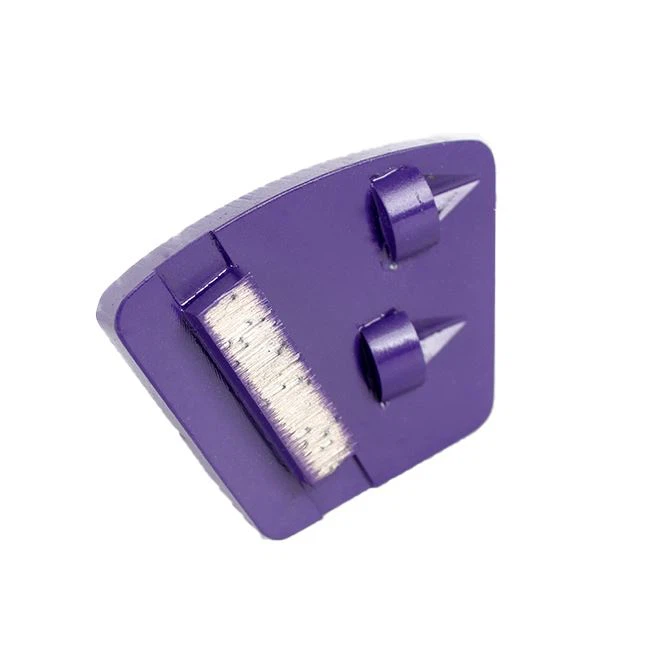
PSA (Pressure Sensitive Adhesive) Backing Pads
These kinds of Backing Pads require sanding disc to use an adhesive to stick to the pad. When the adhesive wears out, the user can remove and replace the pad.
Resin Fiber Backing Pads
These types of pads usually come in different varieties depending on their hole patterns and diameters. They have a rigid base and a coating of resin that gives them durability. They are usually used with resin fiber discs, which are durable and long-lasting.
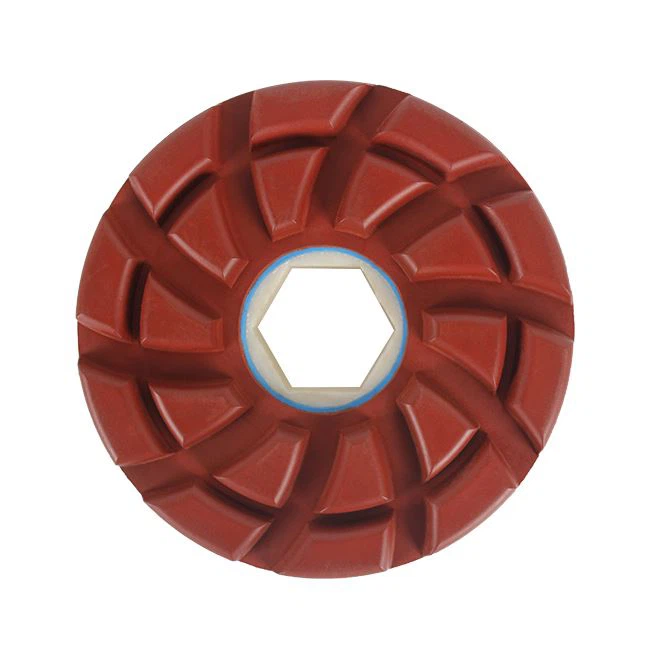
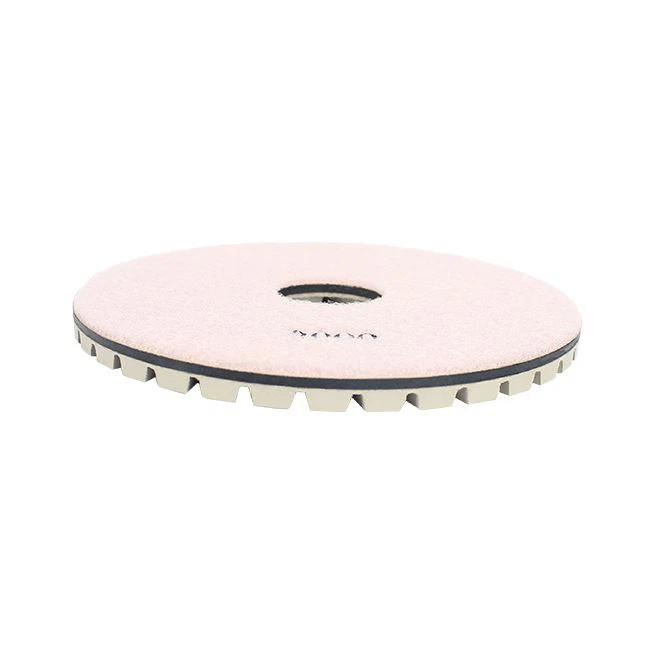
Sanding Disc Backing Pads
These pads usually come in different varieties such as foam, rubber, or plastic. They're used with sanding discs for materials that require a machine polishing or more aggressive sanding.
Stick-On Pads
They come with a sticky backing that makes them easy to attach and detach from sanding discs. They’re a more cost-effective option than PSA pads, and they allow for quick and easy replacement of the sanding disc.
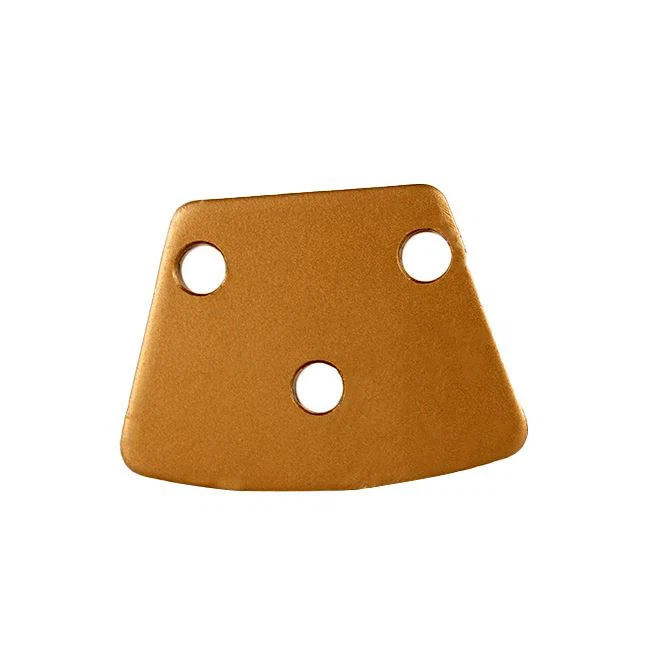
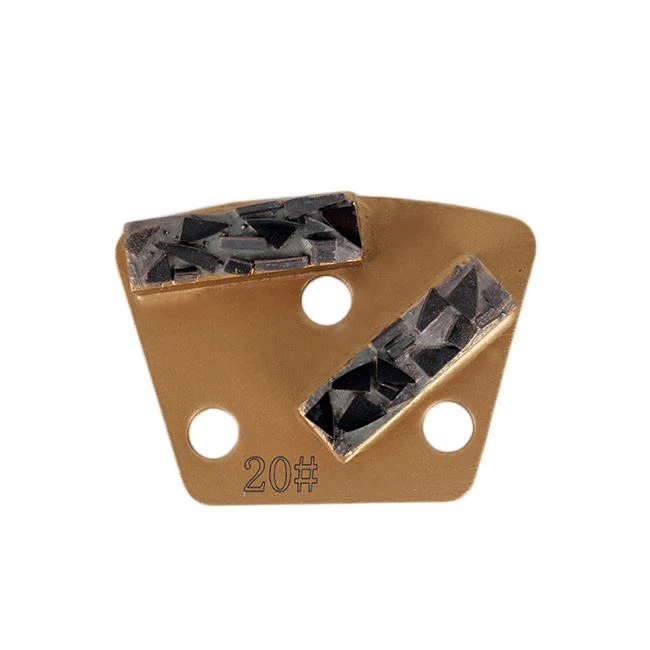
Quick Change Pads
These types of pads are getting more popular as they allow for fast and easy changes of sanding discs while avoiding the need for any additional tools. They usually come with hook and loop or PSA backing.
Materials of Backing Pad
Backing Pads can be made from a variety of materials depending on their intended use, such as:
Metal: Backing Pads made of metal, such as aluminum or steel, are strong and durable, making them ideal for heavy-duty grinding and polishing applications.
Rubber: Rubber Backing Pads are flexible and shock-absorbing, providing a good grip and reducing vibrations during sanding and polishing.
Plastic: Plastic Backing Pads are lightweight and affordable, making them suitable for light-duty sanding, polishing, and finishing tasks.
Foam: Foam Backing Pads offer excellent cushioning and conformability, making them ideal for use with sanding discs and polishing pads.
Leather: Leather Backing Pads are used for polishing and buffing surfaces, providing a smooth, even finish.
Velcro: Velcro Backing Pads have a hook and loop design, allowing easy attachment and detachment of sanding discs and polishing pads.
Composite materials: Backing Pads made of composite materials, such as carbon fiber or fiberglass, are lightweight, strong, and durable, making them suitable for heavy-duty sanding and polishing applications.
Characteristics of Backing Pad
Material: Backing Pads are generally made of materials that are durable and long-lasting, such as rubber, foam, or fiberglass.
Design: The shape and size of the Backing Pad can vary depending on the type of tool it is used with and the application it is intended for.
Attachment method: The Backing Pad must be able to be securely attached to the tool, often using a Velcro or hook-and-loop system.
Backing material: The Backing Pad must have a suitable backing material to provide a cushion between the abrasive material and the workpiece.
Design features: Some Backing Pads have additional design features, such as ventilation channels to improve air flow for more efficient sanding, or a dust collection feature to reduce dust and debris.
Compatibility: Backing Pads must be compatible with the type of abrasive disc being used, such as sandpaper or polishing pads.
Size and thickness: The size and thickness of the Backing Pad will affect its durability, ease of use, and overall performance.
Grip: Backing Pads must have a secure grip to prevent the abrasive disc from slipping or flying off during use.
Flexibility: Backing Pads may need to have some degree of flexibility to conform to curved or irregular surfaces.
Resistance to heat and wear: Backing Pads must be able to withstand high temperatures and the wear and tear of use over time.
Application Fields of Backing Pad
Backing Pads are used in a wide range of applications. Some common application fields of Backing Pads are:
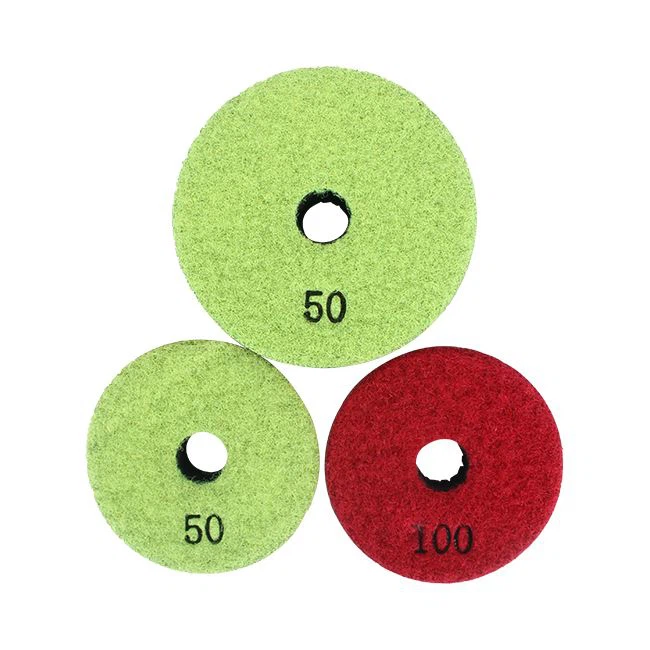
Automotive industry
Backing Pads are used in automotive repair and maintenance to attach abrasive discs and pads for sanding, buffing, and polishing vehicles.
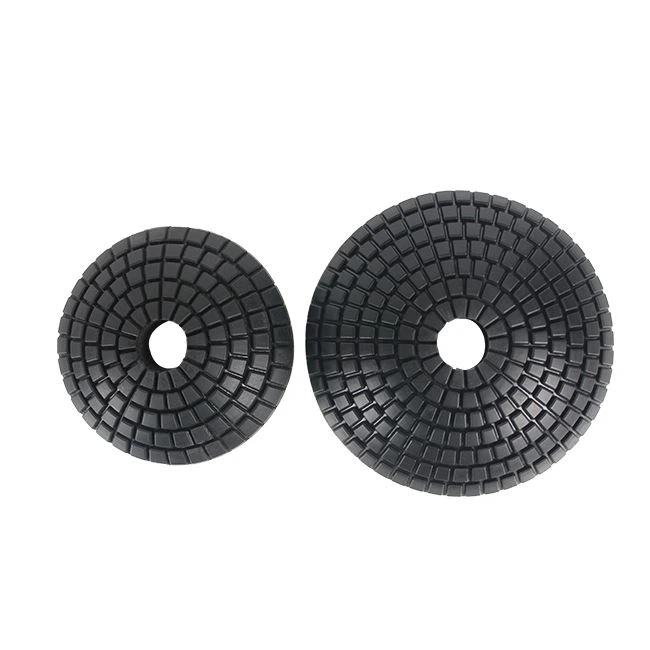
Woodworking
Backing Pads are used in woodworking applications, such as sanding, smoothing, and polishing various types of wood.
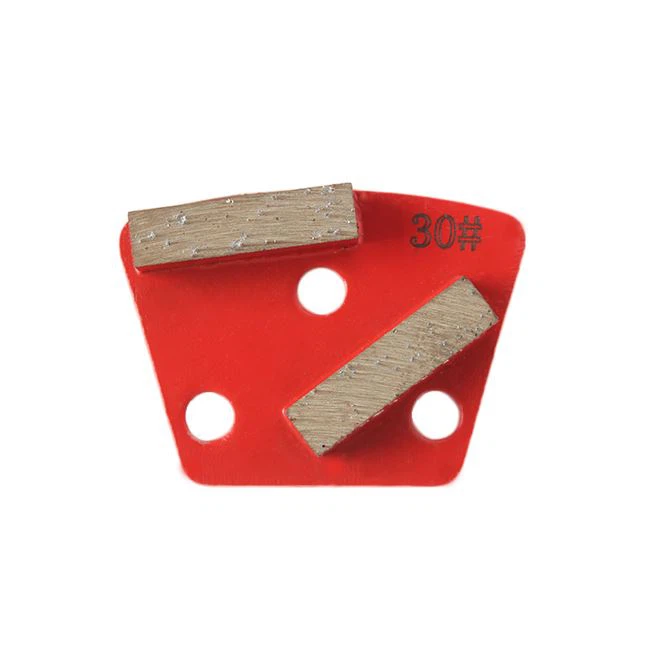
Aerospace industry
Backing Pads are used in the aerospace industry for removing paint and polishing aircraft surfaces.
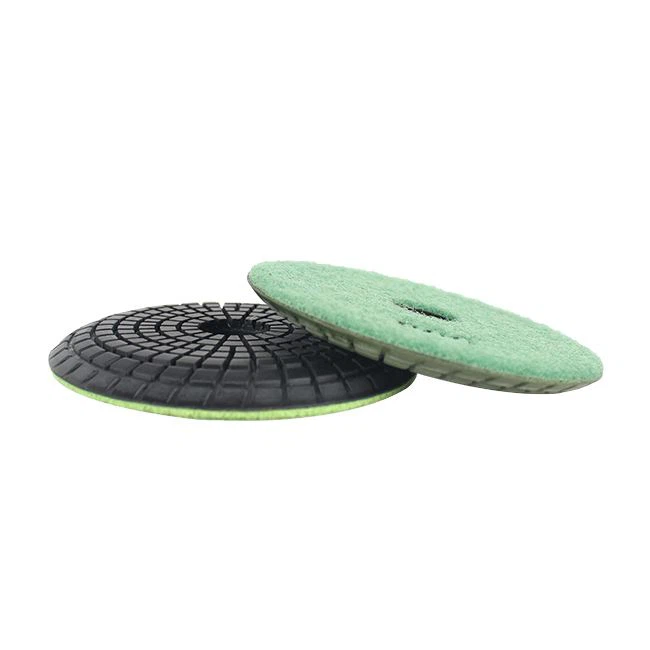
Medical industry
Backing Pads are also used in the medical industry for polishing and grinding dental implants, prosthetics, and other medical devices.
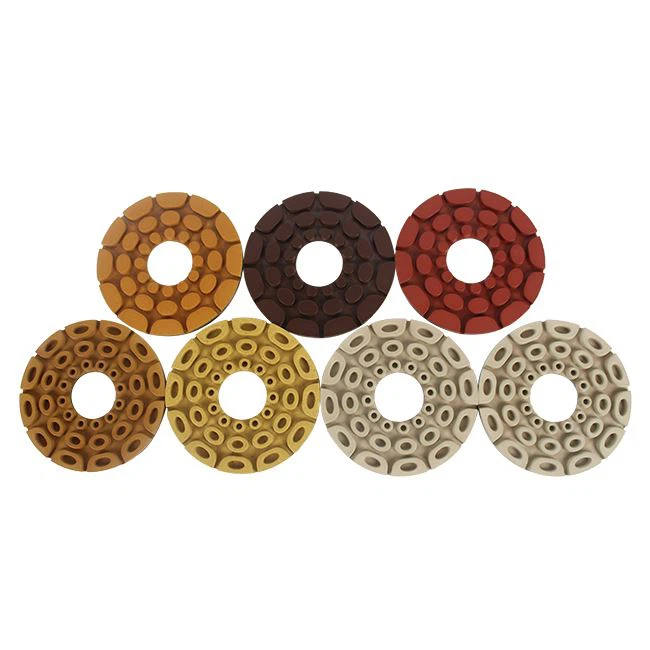
Metalworking
Backing Pads are used in metalworking applications, such as grinding, sanding, and polishing to hold abrasive discs and pads.
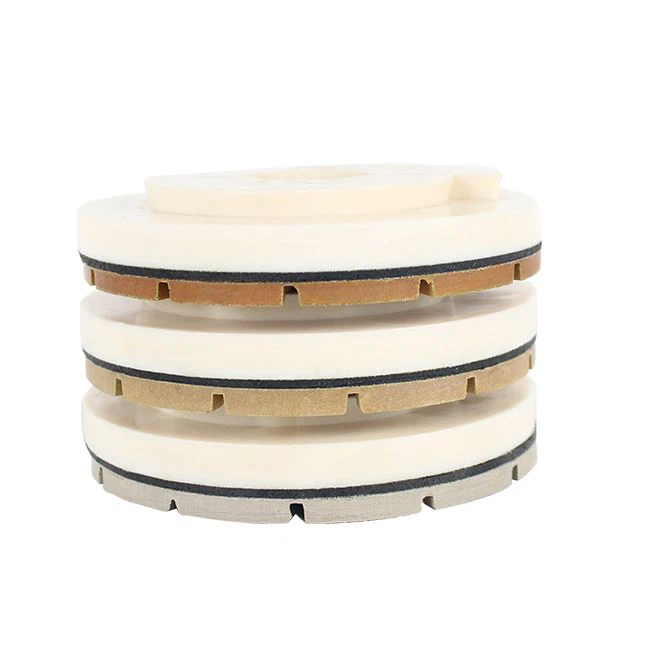
Construction
Backing Pads are used in construction applications for grinding and polishing concrete, stones, and other building materials.
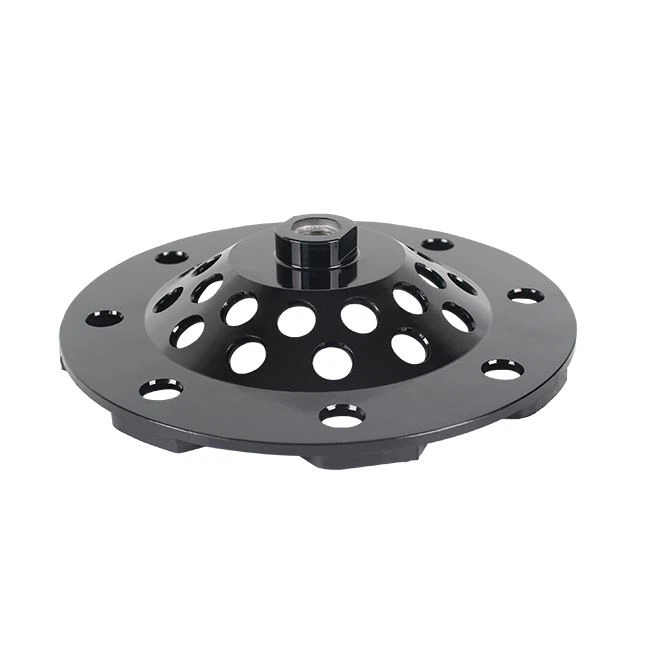
Marine industry
Backing Pads are used in the marine industry for polishing and sanding boats, yachts, and other watercraft.
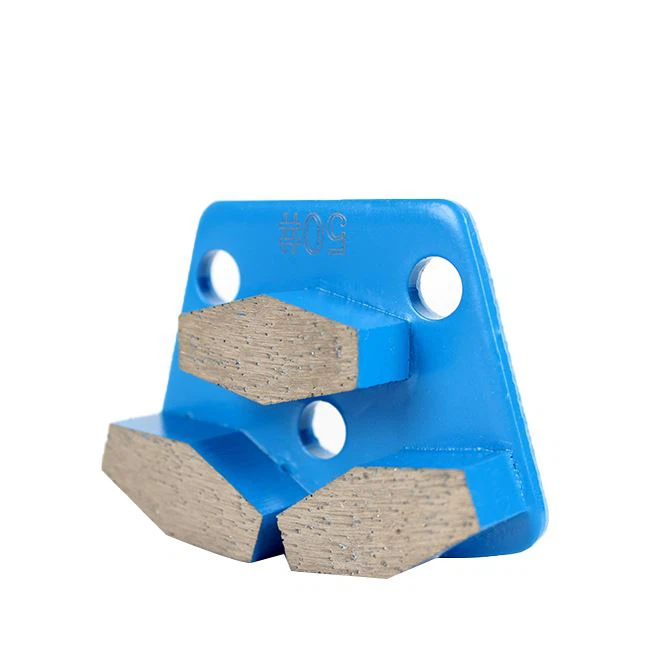
Electronics industry
Backing Pads are used in the electronics industry for polishing and grinding electronic components and PCBs.
Backing Pad hardness is an important parameter to consider when choosing the right pad for your polishing process. The hardness of a Backing Pad affects the performance and effectiveness of the polishing process.
A harder pad provides more pressure and quicker results, but can also generate more heat and cause swirl marks or holograms in the finish. On the other hand, a softer pad provides less pressure but is gentler on the surface and minimizes the risk of scratches or damage.
Therefore, the hardness of the Backing Pad should be chosen based on the type of surface being polished and the level of aggression required in the process. Softer pads are recommended for delicate surfaces, while harder pads are recommended for tougher applications.
How to Use Backing Pad
Choose the Right Size Backing Pad: Ensure that the Backing Pad you choose is the right size for your sander or polisher. If the pad is too small or too big, it may not fit or perform correctly.
Install the Backing Pad: Remove the existing pad from your sander or polisher and attach the Backing Pad to the spindle. Tighten the pad securely before use.
Choose the Right Sanding or Polishing Disc: Choose the correct sanding or polishing disc for your project and attach it to the Backing Pad.
Start Sanding or Polishing: Turn on your sander or polisher and begin sanding or polishing the surface you are working on. Move the tool back and forth using light pressure until you achieve the desired finish.
Adjust the Speed and Pressure: Depending on the material you are working on, you may need to adjust the speed and pressure of your tool. Be sure to avoid applying too much pressure, as this can damage the surface or the pad.
Replace the Disc: Once the sanding or polishing disc becomes worn, replace it with a new one. Make sure the new disc is the same size and type as the old one.
Clean and Maintain the Backing Pad: After each use, remove the sanding or polishing disc and wipe down the Backing Pad with a clean cloth. This helps to remove any debris or residue that may have accumulated during use.
What are the Components of a Backing Pad
A Backing Pad is a circular tool used to attach abrasive disks to a power tool. The components of a Backing Pad include:
Base material
This is the main body of the Backing Pad, which can be made of materials like rubber, foam, or plastic.
Attachment mechanism
The attachment mechanism connects the Backing Pad to the power tool. It can be either a screw or a hook-and-loop fastener.
Hook-and-loop surface
Some Backing Pads have a hook-and-loop surface to hold the abrasive disk in place.
Perforation
Some Backing Pads have perforations to allow air to flow through and keep the tool cool.
Alignment markers
Some Backing Pads have alignment markers to help users align the abrasive disk correctly.
Size
Backing Pads come in different sizes to fit various power tools.
What Are the Specifications of Backing Pad
Backing Pads come in various shapes and sizes, depending on the type of tool they are designed to be used with. However, the following are some common specifications of Backing Pads:
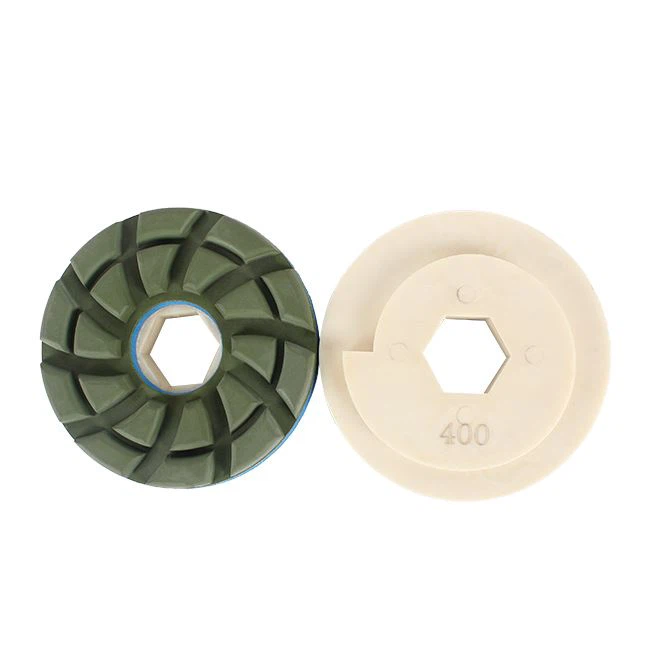
Diameter
The diameter of a Backing Pad is usually measured in inches or millimeters. The size of the pad can range from 2 inches to 12 inches or more.
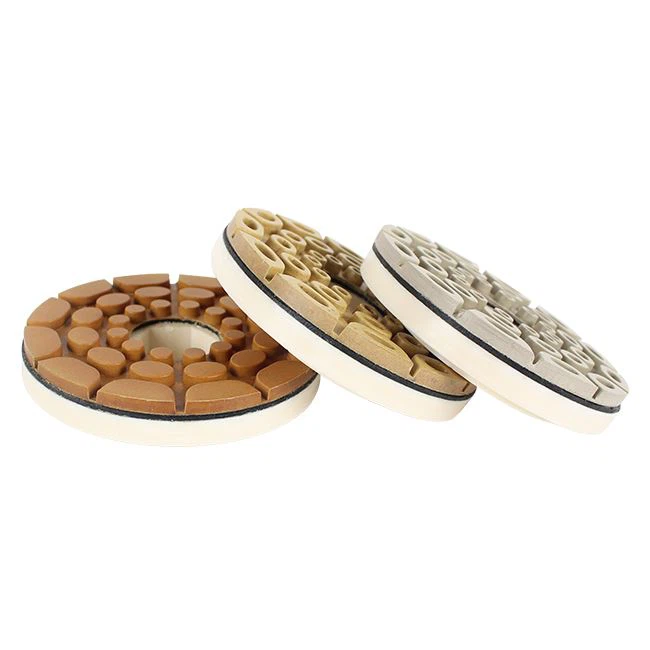
Thread
The thread of a Backing Pad is the mechanism used to attach the pad to the power tool. The most common threads are M14, 5/8"-11 and 1/4" -20.
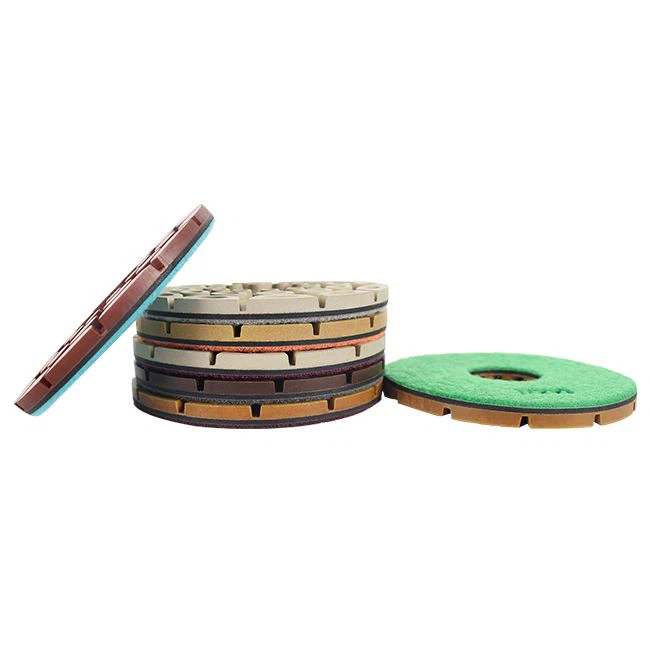
Density
The density of the pad indicates its firmness. Soft density pads are suitable for sanding and polishing, while firm density pads are better suited for grinding and heavy-duty applications.
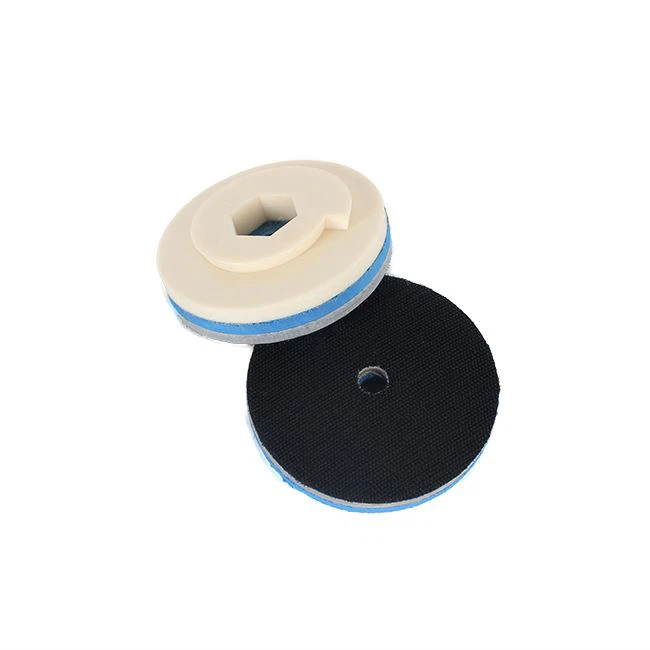
Material
Backing Pads can be made of different materials like rubber, foam, or hard plastic. The material selection depends on the application, with foam being suitable for curved surfaces, and rubber is preferred for aggressive sanding or grinding applications.
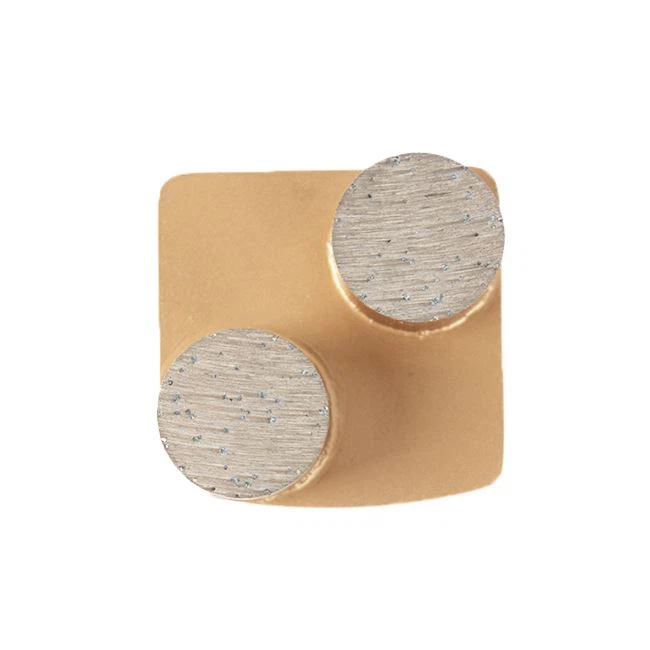
Surface
The surface of a Backing Pad can be smooth or have hooks and loops for attaching abrasive discs or buffing pads. Some pads have a combination of both smooth and hook-and-loop surfaces.
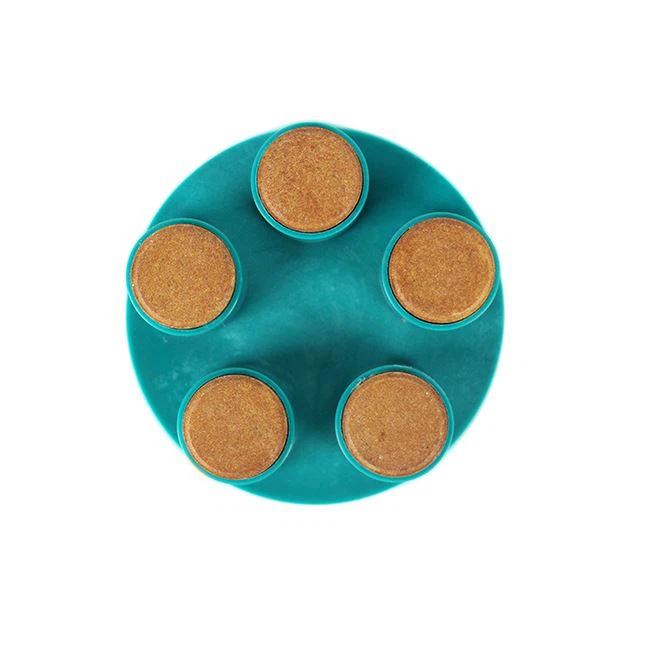
Maximum speed
The maximum rotational speed of the Backing Pad should be observed to prevent overheating or pad destruction. This is commonly measured in revolutions per minute (RPM) and is determined by the tool manufacturer.
Manufacturing Requirements for Backing Pad
Material: The Backing Pad should be made of high-quality materials, such as durable plastics, metal alloys, or rubber. The material should be capable of withstanding high levels of pressure, torque, and heat.
Size: The size of the Backing Pad should match the specifications of the power tool it is designed to fit. The diameter of the pad should be appropriate for the size of the abrasive disk being used. The thickness of the pad should be sufficient to provide firm support and reduce vibration.
Attachment: The Backing Pad should be designed to attach securely to the power tool spindle. It should be easy to install and remove, even when wearing gloves.
Shape: The shape of the Backing Pad should be designed to provide consistent contact with the workpiece. It should be flat or slightly concave, with no protrusions or edges that could damage the workpiece.
Ventilation: The Backing Pad should be designed with ventilation channels to allow for air flow and cooling. This helps to prevent overheating and prolong the life of the abrasive disk.
Compatibility: The Backing Pad should be compatible with a wide variety of abrasive disks, including those designed for sanding, grinding, and polishing.
Durability: The Backing Pad should be built to withstand frequent use and extended periods of operation. It should be able to withstand exposure to oil, grease, and other chemicals without deteriorating or losing effectiveness.
Cost: The Backing Pad should be priced competitively, without sacrificing quality or performance. It should be affordable for both professional and DIY users.
Parameters of Backing Pad
Backing Pads have various parameters that determine their performance, which include:
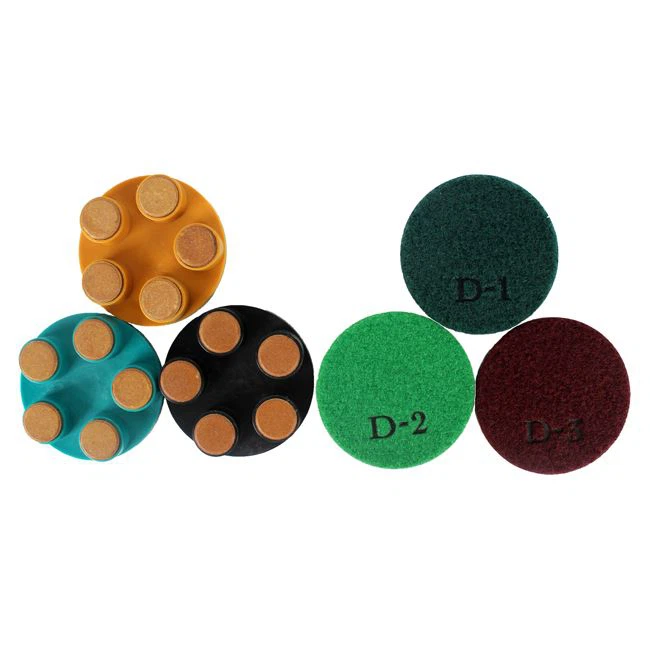
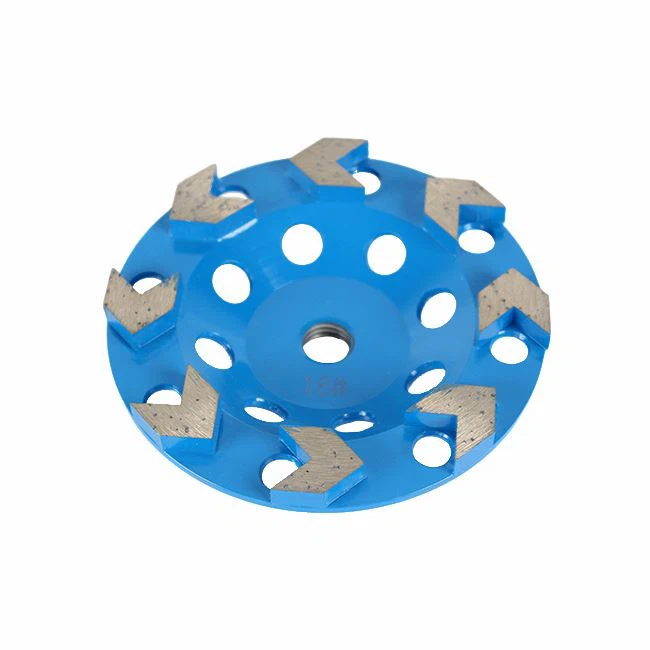

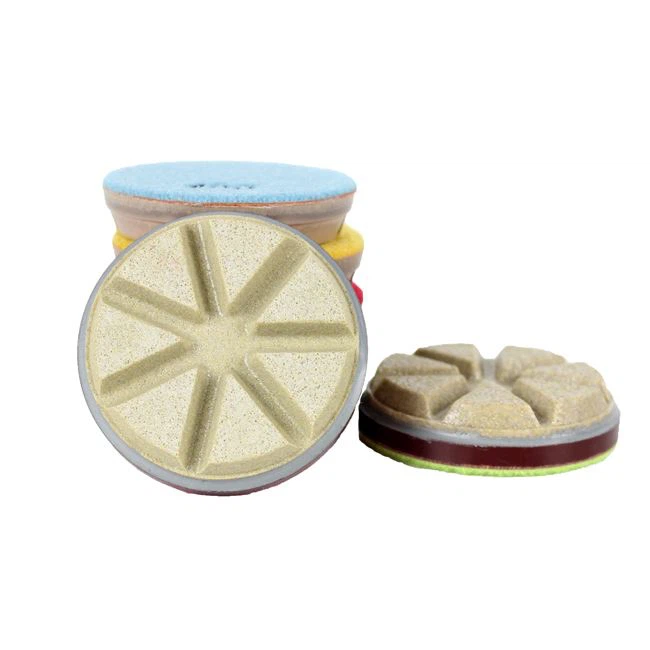
Size: The size of the Backing Pad should match the size of the sanding disc for efficient operation.
Abrasive attachment: The type of abrasive attachment that is compatible with the Backing Pad.
Velcro Hook and Loop: The velcro hook and loop system must match the sanding disc for efficient sanding and polishing operations.
Arbor hole size: The size of the arbor hole must match the size of the polishers shaft.
Hardness: The hardness of the Backing Pad determines its durability and ability to withstand high pressure.
Rotation speed: The rotation speed of the Backing Pad should match the rotation speed of the sander or grinder it is attached to.
Shape: The shape of the Backing Pad should match the contour of the surface being worked on for maximum efficiency.
Material: The material used to manufacture the Backing Pad determines its resistance to heat, chemicals and wear and tear.
Weight: The weight of the Backing Pad determines the pressure that it can exert on the surface being worked on.
Design: The design of the Backing Pad also matters. Some Backing Pads come with vents to allow air flow and prevent heat build up. Others may have a tapered design for smooth sanding and polishing operations.
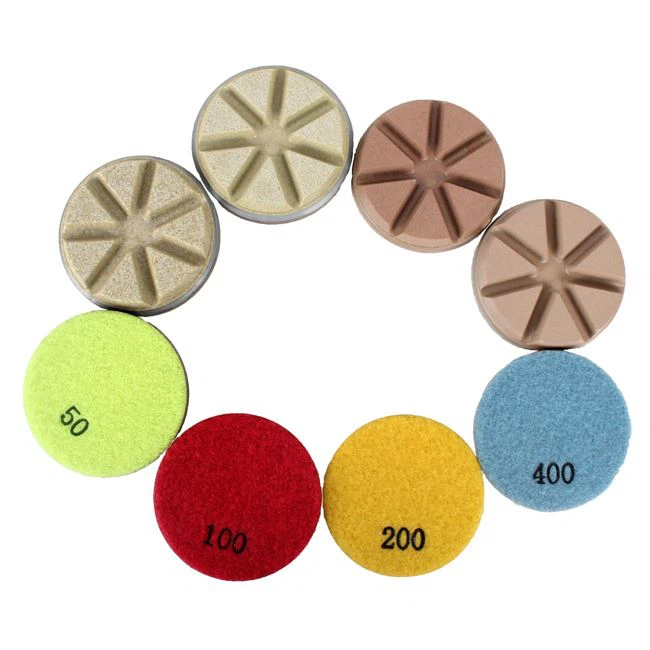
Clean the Backing Pad regularly using a brush or compressed air to remove any dirt, dust, or debris that has accumulated on the surface.
Avoid using harsh chemicals or solvents when cleaning the Backing Pad as this can damage the foam or material used in the construction.
Let the Backing Pad dry completely before reattaching it to the power tool. Moisture can cause the pad to deteriorate more quickly.
Check the Backing Pad for any signs of wear and tear, such as cracks or tears in the foam or material. If the pad is damaged, replace it immediately.
Use a Backing Pad that is appropriate for the application and the type of abrasive being used. Using the wrong pad can cause excessive wear or damage to the pad and the abrasive.
Store the Backing Pad in a clean, dry location when not in use. Avoid exposing it to extreme temperatures or sunlight which can cause the pad to degrade more quickly.
Rotate the Backing Pad on a regular basis to ensure even wear and prolong its lifespan.
Use a pad conditioner or dressing to help maintain the life and performance of the Backing Pad.
Raw Material Purchase: The first step in the Backing Pad production process is the purchase of the raw materials. Commonly used materials include aluminum, plastic, rubber, and adhesive.
Material Preparation: In the next step, the raw materials are prepared for further processing. This may involve cutting, shaping, and smoothing the materials to the required size and shape.
Assembly: In this step, the different components of the Backing Pad are assembled together. This may involve the use of adhesive, welding, or mechanical fasteners to join the parts.
CNC Machining: Computer Numerical Control (CNC) machines are used to accurately machine the Backing Pad to the required size and shape. This involves using specialized cutting tools to shape the Backing Pad to the desired specifications.
Sanding and Finishing: Once the Backing Pad is machined, it is sanded and finished to ensure a smooth and polished surface. This also helps to remove any remaining burrs or rough edges from the machining process.
Quality Control and Inspection: Before the Backing Pad is packaged and shipped, it undergoes a quality control and inspection process. This ensures that the final product meets the desired specifications and is free from any defects.
Packaging and Shipping: Once the Backing Pad has passed inspection, it is packaged and shipped to customers. The packaging may vary between different manufacturers, but typically involves the use of boxes or bags to protect the products during transport.
Factors to Consider When Selecting Backing Pad
Size: The size of the Backing Pad should match the size of the sanding disc you will be using.
Material: The Backing Pad should be made from a durable and high-quality material that can withstand the pressure and heat generated during sanding.
Shape: Backing Pads come in different shapes such as flat, beveled, tapered, and convex. You should select the shape that is appropriate for the type of sanding you will be doing.
Rigidity: The rigidity of the Backing Pad should match the sanding application. If you are doing heavy-duty sanding, a rigid Backing Pad is ideal, while a flexible Backing Pad is suitable for contour sanding.
Attachment method: The Backing Pad should be compatible with the attachment method of your sander. It can be either adhesive or Velcro.
Hole configuration: The Backing Pad should have the same hole configuration as your sanding disc to ensure proper dust extraction.
Brand compatibility: Some sanders require specific Backing Pads for optimal performance. You should check your sander’s manual to ensure that your selected Backing Pad is compatible with your sander.
Price: Lastly, the price of the Backing Pad should be within your budget. It is important to compare prices and choose a good quality Backing Pad within your budget.
Our Factory
Founded in 1994, TRUE SHINE is one of the world's leading manufacturers of stone and concrete grinding and polishing materials.As a technology-driven company, research and development has always been a core element of TRUE SHINE. With years of experience and a strong spirit of innovation, the company has built many excellent products and become one of the world's leading abrasives manufacturers.

Our Certificate
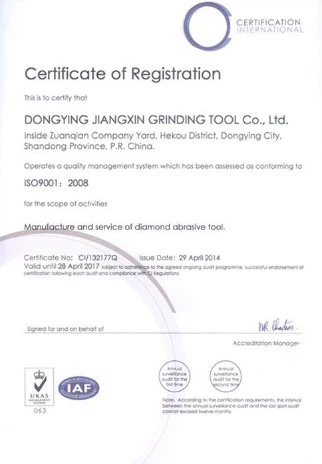
FAQ
We're professional Backing Pad manufacturers and suppliers in China since 1994, specialized in providing the best customized service with competitive price. Welcome to wholesale bulk high quality Backing Pad made in China here from our factory.
Granite Polishing Pads, Transitional Ceramic Bond Diamonds, Honeycomb Dry Polishing Pads
